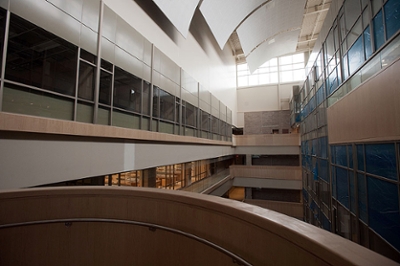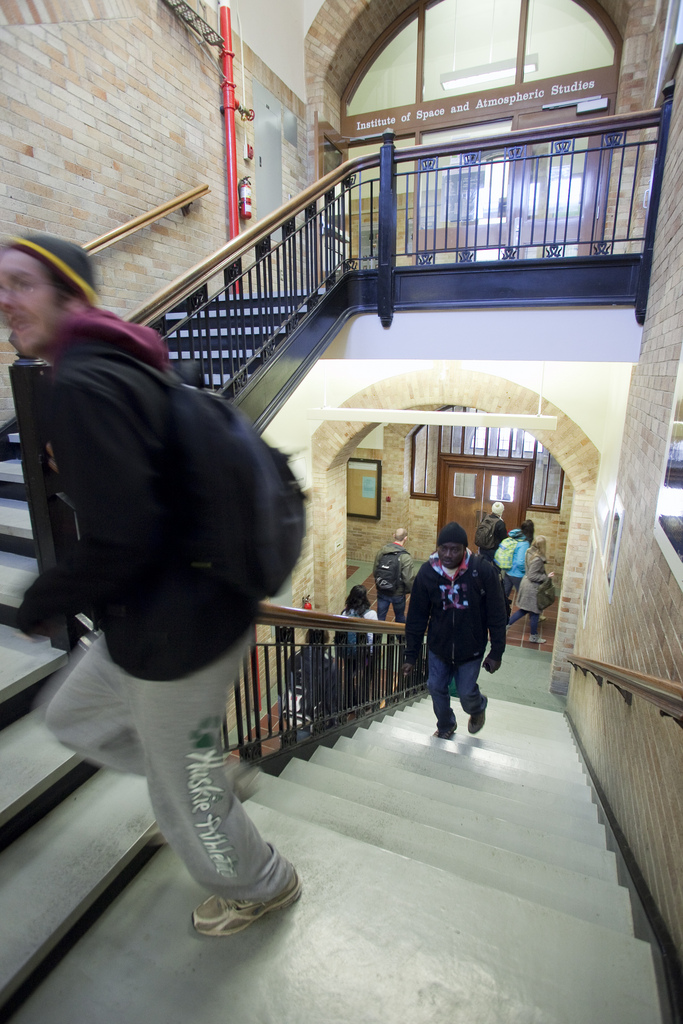Report: It's Time We Walk the Walk on Aging Infrastructure
A Sightlines report looking at sustainability and energy trends in North American colleges and universities over the past 8 years says we know where the problems lay, it's just time to tackle them.
By Matt Wolsfeld
From time to time, it is important for us as a university to sit back and reflect on where we are in our sustainability efforts. Now, with the publication of a recent report by American consultant group Sightlines, we can take a closer look at how energy use has impacted sustainability at universities and colleges over the past 8 years. The results are a mirror into innovation and the perils of growth: we’ve become better at building efficient and sustainable new spaces while ignoring aging spaces that are the cause of most of our emissions.
Universities and other institutions of higher education experience unique challenges in their efforts to remain sustainable: their large space footprint often results in higher emissions and energy consumption, their needs are impacted by a high number of employees and students who occupy these spaces, and they are often limited in their options for implementation of broad-scale infrastructure changes depending on funding resources and the municipal grid they are associated with. These issues highlight why a comparison across institutions of higher education is necessary in order to find reasonable solutions to our problems.
The Sightlines report, released late last year in collaboration with the University of New Hampshire’s Sustainability Institute, analyzed energy and emissions data from North American universities between 2007 and 2014. The study was conducted in part to revisit the recommendations of the University & College Presidents’ Climate Commitment, which the University of Saskatchewan is a signatory of.
In general, emissions are reducing at institutions of higher education, but energy and fossil fuel usage is not; between 2010 and 2014, average emissions dropped 5% while energy consumption has increased by 3%. The likely reason for this is an overall switch from coal to natural gas energy sources (natural gas made up 74% of university and college energy sources in 2007, increasing to 87% in 2014). While a transition to cleaner fossil fuels is a step in the right direction, increased energy usage threatens to counter these gains entirely.
We’ve also seen an interesting trend in electricity usage, which has increased despite a drop in emissions. As a whole, energy grids across North America are becoming cleaner (switching from coal to natural gas and renewables) while institutions are shifting capital investments into better building envelopes and mechanical systems. Here at the University of Saskatchewan this same effect has taken hold: despite several new buildings being added to campus, we’ve seen very little change to emissions because of improved building practices. While it is important to ensure new spaces on campus are sustainable and efficient, this still does nothing to solve the problem of rising electricity consumption which sets a standard for long term usage habits.
On the topic of aging infrastructure, older institutions have been hit harder by these changes. Campuses with old buildings have been investing more just to keep themselves operating normally. Investments in new and efficient infrastructure are great if expansion is necessary, but as long as aging and inefficient infrastructure goes unchecked it will continue to bleed energy from the grid. Here at the U of S we are heading into a period of capital renewal to address this issue by pushing efforts to bring aging buildings closer in line to their newer counterparts.

When the problem of aging infrastructure seems so expensive and unwieldly, how can institutions of higher education find timely solutions? Public commitments and policies, says the report, have been tied to the most drastic changes. Signatories to the UCPCCS (including the U of S) have on average 27% less emissions than those who have not signed on. These grand public commitments set a standard for an institution to live up to while encourage action at their facilities divisions. Strong building and commissioning policies also correlate with lower emissions and consumption. Leadership from governing bodies helps develop norms and behaviours among the campus population in addition to pushing infrastructure investment.
So how do we address these issues to start making a dent in our carbon emissions at the university? The reports three main policy recommendations are mostly concerned with building space: set capital priorities for aging buildings, eliminate or replace aging space with new modern facilities, and minimize net new square footage. By keeping building expansion low and upgrading existing buildings to efficient systems, we can stop the energy bleed and start reducing our maintenance requirements over time. The difficulty of these goals can’t be ignored: building upgrades and recommissioning can oftentimes be even more expensive and challenging than constructing entirely new buildings. However, with focused leadership and a backbone of strong policy to support us, we may soon find ourselves in a renewed (and much cleaner) university.
